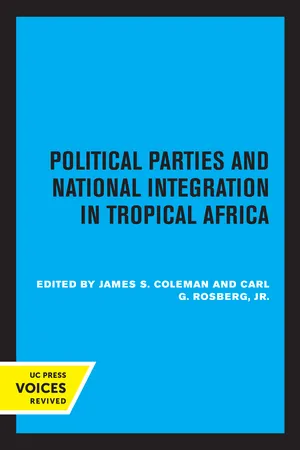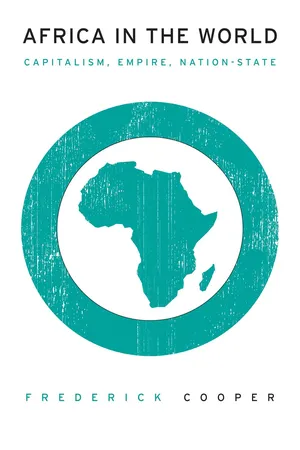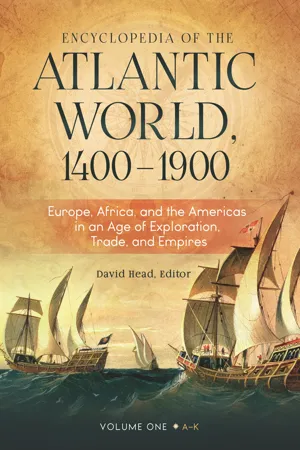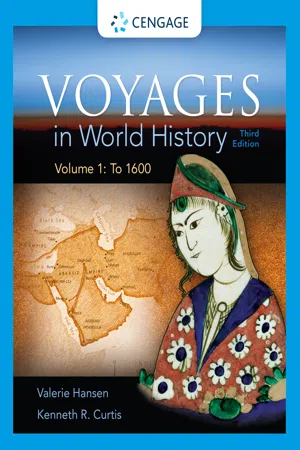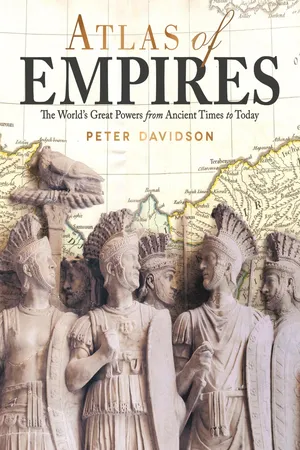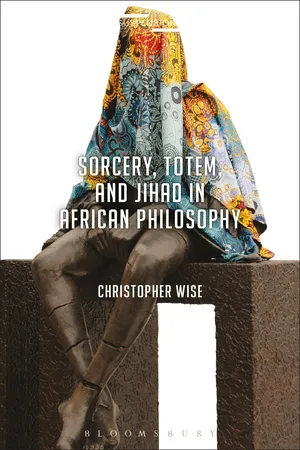History
Mali Empire
The Mali Empire was a powerful state in West Africa from the 13th to the 16th century. It was renowned for its wealth, trade in gold and salt, and the legendary leadership of Mansa Musa. The empire's capital, Niani, was a center of culture, learning, and Islamic scholarship, making it a significant influence in the region.
Written by Perlego with AI-assistance
Related key terms
1 of 5
8 Key excerpts on "Mali Empire"
- James S. Coleman, Carl G. Rosberg, James S. Coleman, Carl G. Rosberg(Authors)
- 2023(Publication Date)
- University of California Press(Publisher)
Moreover, the Malinke, the dominant people of modern Mali who gave their name to the medieval state, have penetrated as traders into neighboring West African countries from Senegal to modern Ghana, whereas the Fulani, who have played a major part in Mali history, are widely dispersed throughout the whole West African region. Nonetheless, modern Mali possesses a kind of national identity, as the heartland of a succession of states and empires based upon the Upper Niger, occupying varying sectors of the western Sudan, and extending northward into the western Sahara. From the eighth century, at least, and probably from a much earlier date, until about 1200, the empire of Ghana was the dominant power in this western Sudanic region. Ancient Mali, from which the modern state derives it name, was in existence probably from the eleventh century, under a dynasty that was converted to Islam about 1040. But it was not until the middle of the thirteenth century, under the famous Mansa Sundiata—the semilegendary ruler who con- 4 Georges Spitz, Soudan Français (Paris: Editions Maritimes et Coloniales, 1955), p. 13. The term "Soudan Français" was used as early as 1890 to refer to the region of the interior under French occupation administered from Kayes. 220 Mali stantly recurs in the literature and the propaganda of modern Mali— that ancient Mali established itself as a major power and an effective successor state to Ghana. During the fourteenth century, under Mansa Musa and his successors, the Mali Empire extended its international con- nections, particularly with Morocco and Egypt, from which it drew ex- patriate civil servants and technical assistants. By the beginning of the fifteenth century Mali's power was much reduced.- eBook - PDF
Africa in the World
Capitalism, Empire, Nation-State
- Frederick Cooper(Author)
- 2014(Publication Date)
- Harvard University Press(Publisher)
The emperor could ensure his cut in the trade of gold and slaves more readily than the extraction of surplus production from “his” people. He could use the profits of trade to buy slaves, who could fight on his behalf as well as produce. His wealth and military power could attract the support of young men who had become detached from or sought an alternative to their own kinship group. Because empires left their constituent parts relatively autonomous, they could unravel as quickly as they were put together—and be recombined by new conquerors to build another imperial system. Such a pattern even-tually befell Ghana, which was slowly eclipsed in the late thirteenth cen-tury by a new imperial formation, Mali. Myth has it that twelve kingdoms ceded their power to the dynasty of Sunjiata to create the Mali Empire. It, like many empires around the world, began as composite, with a ruling dynasty—from the Malinke linguistic/ethnic group in this case—rather than as a unified power structure that extended its domination over space. 5 But its growth and continued strength stemmed from control of trade routes linking Sahelian territories across the desert to North Africa and the Mediterranean world. Michael Gomez, who has embarked on a reexamination of the Islamic empires of West Africa, points out that Mansa Musa, the young king of Mali at the turn of the fourteenth century, knew about the Almoravid and Almohad empires of North Africa and about the Mamluks who ruled Egypt. 6 The title mansa can be translated as emperor. Mali was an empire among empires, a multiethnic polity. The emperor not only distributed the resources of trade and conquest to followers, but put together a power base independent of his own society and especially its elite members. Slaves were crucial to his rule, serving in the palace and administration, including the farba, a slave who was the head of the royal household and chief of the other slaves. - eBook - ePub
- Toyin Falola(Author)
- 2023(Publication Date)
- Routledge(Publisher)
22 The Mali Empire occupied a very strong position, with impressive accomplishments in philosophy, indigenous knowledge systems, and political management. The empire was structured to lean on spiritual and Islamic beliefs, with an economic system that brought about the class stratification of those who were higher in social status and those who were lower. Power relations between genders constituted another integral part of their political system, and there were stipulated etiquettes that governed political participation and power distribution in society. The Mali Empire asserted a great deal of political power exercised by the center, which superseded all subsidiary units.The Songhai Empire
The third and last of the major Western Sudanese empires was the Songhai Empire, which succeeded Mali by the fourteenth century. The dominance of empires rarely went unchallenged, going by the reality that a highly centralized government was always prone to intermittent internal and external aggressions. This occurred especially when the political drivers maintaining its existence were conquered or dead. Even if the former was impossible, perhaps because of the military infrastructure in place, the latter was inevitable as successful kings would not live forever. As Mali expanded geographically and became politically impenetrable, other emerging groups sought available opportunities to overtake it and become the new center of power.Here was the Songhai Empire, which rose to prominence as soon as Mali’s sovereignty was challenged and its political pride severely wounded. As Mali faltered nearly half a decade before Mansa Sulaymān’s reign ended,23 it paved the way for a strong Songhai Empire to take over.24 Perhaps because this newly fledgling empire had consciously learned from the downfall of the previous rulers, critically studying the reason for their eventual weakness, Songhai decided on a different approach to systematize its relationship with its subsidiaries. Power distribution in the Songhai Empire was different because it was a heterogeneous society reflective of plural identities and societies.25The diversity in the Songhai Empire was institutionalized by a political system that enabled representation to break the walls of ethnic affiliation. It bolstered a system where political participation transcended familial loyalties, evoking what Francis Fukuyama referred to as “natural sociability.”26 This means that the empire was symbolic and can be linked to some ideas in a modern democracy, in which heterogeneity was well managed to recognize different identities. From the tenth century until circa 1591, Songhai had an imposing political dynasty that was able to manage resources and people.27 - eBook - PDF
The Adventures of Ibn Battuta
A Muslim Traveler of the Fourteenth Century, With a New Preface
- Ross E. Dunn(Author)
- 2012(Publication Date)
- University of California Press(Publisher)
13 Mali The people of Mali outnumbered the peoples of the Sudan in their neighborhood and dominated the whole region . . . Their authority became mighty and all the peoples of the Sudan stood in awe of them. l Ibn Khaldun When Ibn Battuta visited Cairo in 1326 on his way to his first hajj, the population was undoubtedly still talking about the ex-traordinary pilgrim who had passed through the city two years earlier. Mansa Musa, ruler of the West African empire of Mali, had arrived at the Nile in the summer of 1324 after having crossed the Sahara Desert with a retinue of officials, wives, soldiers, and slaves numbering in the thousands and a train of one hundred camels loaded with unworked gold. A handsome young king of piety and noble bearing, he had created a minor sensation among Cairo's protocol-conscious officials by refusing to kiss the ground before the Mamluk sultan, al-Nasir Muhammad. Yet he flooded Cairo with his benefactions, writes the historian al-Umari, and performed many acts of charity and kindness. 2 Having come so far from their distant grassland kingdom, the emperor and his gold-heavy entourage spent freely and indis-criminately in the Cairo bazaars, like prosperous and naive tourists from some American prairie state. The Cairenes, says al-Umari, made incalculable profits out of him and his suite in buying and selling and giving and taking. They exchanged gold until they depressed its value in Egypt and caused its price to fall. 3 Musa was not the first mansa (king, sultan) of Mali to go on pilgrimage to Mecca, but none before had made such a dazzling display of pomp and riches. Well into the next century Egyptian chroniclers wrote about the event and its disturbing short-term ef-fects on the Cairene gold market. In the history of medieval West Africa no single incident has been more celebrated. Indeed the hajj of Mansa Musa sums up Mali's important place among the king-doms of Africa and Asia in Ibn Battuta's time. 290 13 - eBook - ePub
Encyclopedia of the Atlantic World, 1400–1900
Europe, Africa, and the Americas in an Age of Exploration, Trade, and Empires [2 volumes]
- David Head(Author)
- 2017(Publication Date)
- ABC-CLIO(Publisher)
M Mali EmpireThe Mali Empire arose when a number of Southern Mande clans coalesced around a charismatic leader, Sundiata Keita (1190–1250), in reaction to the oppression of Sumanguru Kante, the ruler of the Soso Kingdom, a short-lived Mande successor state (1180–1235) of the Ghana Empire. In 1235, at the head of a united Mande army, Sundiata defeated Sumanguru at the Battle of Kirina, near today’s Koulikoro. Under his leadership and that of his successors, Mali developed into a larger and more powerful empire than Ghana. Of the three West African Sudanic empires, Ghana, Mali, and Songhay, Mali was the only one to establish direct diplomatic and trading contacts with a European maritime power, Portugal, in the fifteenth and sixteenth centuries. It thus participated on a small scale in the Atlantic trade system.The core area of Mali was located along several of the tributary streams that form the Niger River. Well-watered, it offered greater agricultural possibilities than ancient Ghana. Its capital city, Niani, located on the Sankarani River, lay close to the Bure goldfields alongside the Tinkisso River, thus giving Mali a strong position in the gold trade.Al-Bakri (1014–1094), the Andalusian Muslim geographer, was the first writer to describe Mali. After Mali had become well-known in the Muslim world, Ibn Khaldun (1332–1406) wrote that Islam came to Mali before the fall of Ghana and that the first ruler to go on the hajj was Barmandana. Although Sundiata’s clan, the Keita, claimed descent from Bilal ibn Rabah, the former Abyssinian slave who became the faithful companion of the Prophet Mohammed and his first muezzin. Most of what is known about Sundiata comes from Mande oral traditions, which portray his rise and defeat of Sumanguru in a context of traditional religion and magic. Yet Sundiata was Muslim, and once established as the emperor (mansa - eBook - PDF
- Valerie Hansen, Ken Curtis(Authors)
- 2016(Publication Date)
- Cengage Learning EMEA(Publisher)
The Mali army consisted of different independent armies, each led by a local leader who decided in each instance which higher leader he would support. Mali leaders began to import horses from North Africa around 1000, but initially only the most important leaders fought on horseback. At its largest point, reached some one hundred years after Sundiata’s reign, the kingdom of Mali extended more than 1,000 miles (1,600 km) east to west and included the basins of both the Senegal and Niger Rivers. By 1400, the kings of Mali led armies of mounted warriors into battle. The Mali government’s primary source of revenue was taxing trade. One of Sundiata’s wealthiest successors was Mansa Musa (r. 1307–1332), who visited Cairo on his way to Mecca in 1324. ( Mansa is a word in the Malinke language meaning “supreme ruler,” and Musa is Arabic for Moses; Mansa Musa means King Moses.) Five hundred servants, each carrying a staff of gold weighing 6 pounds (2.7 kg), for a total of 3000 pounds (over 1 metric ton), walked in front of him. Our sources may exaggerate, of course. One hundred camels were required to Ibn Khaldun (1332–1406) Prominent Muslim historian born in Tunis in North Africa; he reported on the kings of Mali. Copyright 2017 Cengage Learning. All Rights Reserved. May not be copied, scanned, or duplicated, in whole or in part. Due to electronic rights, some third party content may be suppressed from the eBook and/or eChapter(s). Editorial review has deemed that any suppressed content does not materially affect the overall learning experience. Cengage Learning reserves the right to remove additional content at any time if subsequent rights restrictions require it. - No longer available |Learn more
Atlas of Empires
The World's Great Powers from Ancient Times to Today
- Peter Davidson(Author)
- 2018(Publication Date)
- CompanionHouse Books(Publisher)
fading.Already in 1340, the Songhay from Gao had broken away. They controlled the canoes that carried Mali’s trade along the Niger. Under Sonni Ali (1464–1492), they took Timbuktu in 1468 and, in 1473, the great city of Djenné, which Mali could never capture because it was built on an island in the river. Being farther away, Songhay could not gain as tight a grip on the goldfields as Mali, but there were big slave markets in both Gao and Timbuktu. Under the Songhay, therefore, slaves replaced gold as the main commodity traded across the Sahara.Askia Muhammad I (1493–1538) was as much a successor to Mansa Musa as to Sonni Ali. He was a centralizer, replacing the tribal basis of Songhay administration with a bureaucracy based on Islamic law. He also presented himself culturally as the preserver of Mali’s empire, promoting Islamic scholarship as Mansa Musa had done and presiding over Timbuktu’s golden age.However, the Songhay Empire, which reached to Cameroon at its height, was run by a tiny Islamic urban elite, just 3 percent of the population, and was beset by increasing revolts. In addition, it made enemies in the north by taking the Taghaza salt mines in 1493 and, in 1591, firearms enabled Morocco to destroy Songhay and cart Timbuktu’s scholars off to Marrakech. In Niani, meanwhile, Mali’s mansas hung on in name until 1670, when the city was razed by Djenné.By this time, gold had long been moving south to European traders on the coast and in 1663, the English began minting the guinea (a corruption of either “Ghana” or “Djenné”). But European colonies in the Americas meant demand for West Africa’s gold was giving way to demand for slaves, so that here on the coast, as across the Sahara, the gold trade dwindled. The transatlantic slave trade had arrived, yet the Europeans themselves were kept at bay. Dense jungle and unnavigable rivers kept inland areas removed from the effects of European imperialism until well into the 19th century. By then, centuries of isolation from Europe’s technological advancement made its sudden appearance all the more devastating. - Christopher Wise(Author)
- 2017(Publication Date)
- Bloomsbury Academic(Publisher)
There are two separate but parallel histories of race and slavery in Africa. First, there is the well-known history of race and slavery throughout the Americas, often referred to as the trans-Atlantic slave trade or “triangle”; second, there is the lesser known history of race, racism, and slavery of black African peoples in the Arab Islamic world. At least it is lesser known in the West. In West Africa, this history is well known and remains a source of great bitterness and resentment. The Plundering of Mali, Past and Present 3 Since the time of Leo Africanus, European Christians and Arab Muslims have worked together to further their interests in West Africa, but on occasion they have also competed for control of this vast territory. In 1591, about forty years after Leo Africanus’s visit to Timbuktu, Maghrebian Muslims and Spanish Christians joined forces to decimate a vast, powerful and wealthy dynasty that flourished in Mali for about a hundred years, the Songhay Dynasty of the Askiyas. Before that, the Songhay were ruled by the Dia Dynasty, a Songhay Dynasty that reached its apex during the reign of the legendary Sunni Ali Ber, noted today for his cruelty and military prowess. In even earlier times, the Soninke or Wakuri nobility ruled both the Mande Dynasty of Sundiata Keita and the Ghana Dynasty based in Wagadu. In other words, the various family dynasties of West Africa were essentially reincarnations of one another, led by the same notables, family, and kinsmen. These notables are referred to in the Tarikh al fattash as the Wakuri, but they are also known as the Soninke. 1 The destruction of the Songhay Dynasty of the Askyias in 1591, after the scouting mission of Leo Africanus, did not then signify the demise of a relatively insignificant dynasty in West Africa. It signified the conclusion of an entire epoch. It signified the demise of black African political autonomy, from that day to the present.
Index pages curate the most relevant extracts from our library of academic textbooks. They’ve been created using an in-house natural language model (NLM), each adding context and meaning to key research topics.
